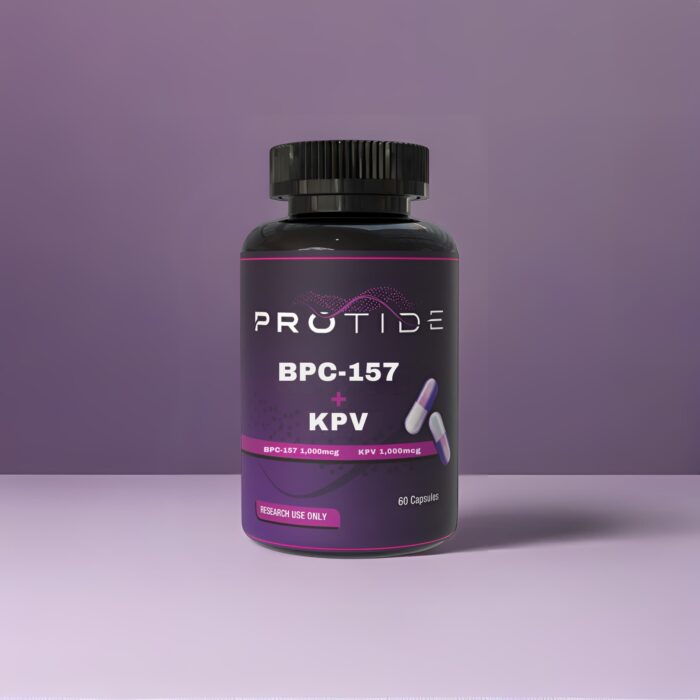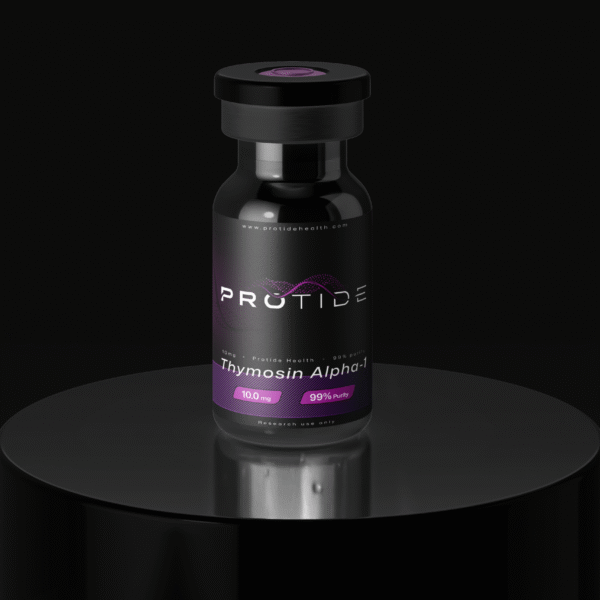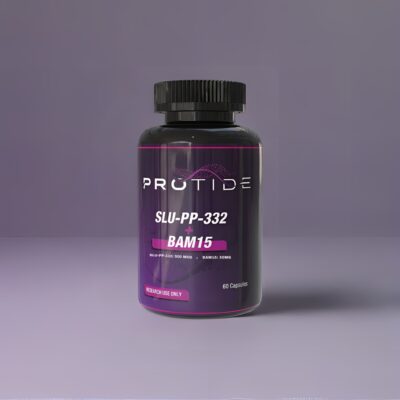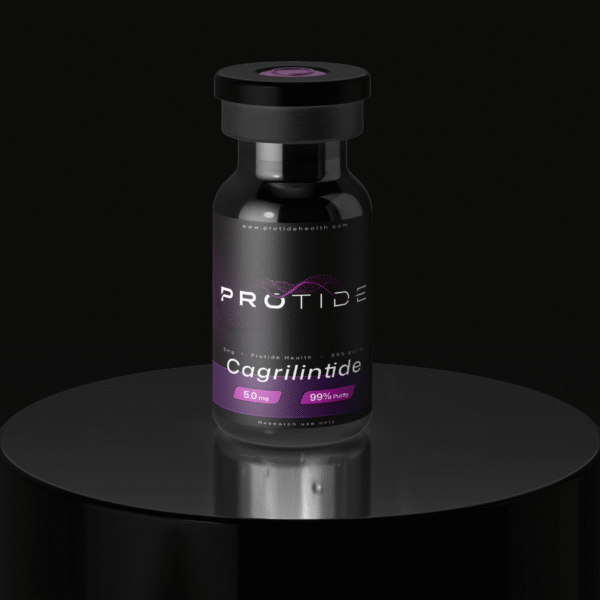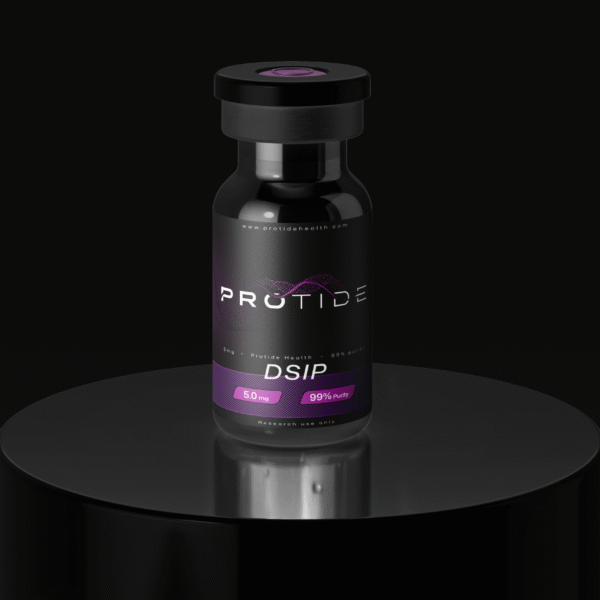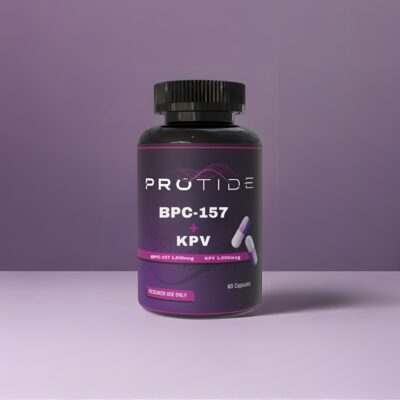BPC-157 & KPV Capsules
$275.00
BPC-157 and KPV are two extensively studied short bioactive sequences that have drawn attention in preclinical models for their regenerative and anti-inflammatory potential.
In stock
Free shipping on orders over $99!
- 99% Purity
- Third-Party Tested
- Secure Payments
- Free BAC Water
- Satisfaction Guaranteed
BPC-157 & KPV Capsules
Dual-pathway research on cellular repair, inflammation modulation, and gut-tissue homeostasis.
Introduction to BPC-157 and KPV
BPC-157 and KPV are two extensively studied short bioactive sequences that have drawn attention in preclinical models for their regenerative and anti-inflammatory potential.
BPC-157 (Body Protection Compound-157) is a pentadecapeptide fragment (15 amino acids) derived from the human gastric protein BPC. It has been shown in laboratory and animal studies to support angiogenesis, fibroblast migration, and modulation of nitric-oxide and growth-factor signaling — mechanisms that underlie its broad investigational value in tissue repair and gastrointestinal protection.
KPV (Lys-Pro-Val) is the C-terminal tripeptide fragment of the α-melanocyte-stimulating hormone (α-MSH). It exhibits potent anti-inflammatory and immunomodulatory properties through melanocortin-1 receptor (MC1R) interaction and downstream NF-κB suppression.
Together, these compounds offer complementary research pathways: BPC-157 promotes structural repair and angiogenesis, while KPV regulates the inflammatory environment, allowing researchers to examine coordinated healing and immune balance across multiple tissue systems.
Chemical and Structural Properties
BPC-157
- Sequence: Gly-Glu-Pro-Pro-Pro-Gly-Lys-Pro-Ala-Asp-Asp-Ala-Gly-Leu-Val
- Molecular Formula: C₆₂H₉₈N₁₆O₂₂
- Molecular Weight: 1419.54 g/mol
- Form: Lyophilized or encapsulated powder
- Storage: Stable at –20 °C; protect from moisture
BPC-157’s high polarity and peptide-bond stability confer resistance to enzymatic degradation under simulated gastric and plasma conditions, extending its research shelf life. Its amphiphilic nature allows both systemic and localized diffusion in preclinical models.
KPV
- Sequence: Lys-Pro-Val
- Molecular Formula: C₁₆H₂₉N₅O₄
- Molecular Weight: 355.44 g/mol
- Form: Lyophilized or capsule formulation
- Storage: Stable at –20 °C; avoid light and humidity
KPV’s simplicity as a tripeptide and its non-immunogenic profile make it suitable for mechanistic studies of inflammatory-signaling modulation without cytotoxicity. It retains MC1R affinity while lacking the full hormonal complexity of α-MSH, allowing focused examination of anti-inflammatory cascades.
Mechanisms of Action
BPC-157
BPC-157’s biological effects arise from its interactions with multiple molecular pathways governing angiogenesis, nitric-oxide synthesis, and extracellular-matrix remodeling.
Key mechanisms include:
- Angiogenic Signaling: Upregulation of VEGF and FGF receptors promotes new capillary formation and improved tissue perfusion (Wang et al., 2020).
- Cytoprotective NO Pathway: Modulates eNOS activity to maintain endothelial integrity and oxidative-stress balance.
- Fibroblast and Collagen Stimulation: Accelerates fibroblast migration and type-I collagen deposition in wound-repair models.
- Gastrointestinal Barrier Protection: Stabilizes enterocyte tight junctions and mitigates cytokine-induced mucosal injury (Gasparini et al., 2022).
KPV
KPV’s mode of action centers on suppression of inflammatory cascades and restoration of epithelial homeostasis through MC1R and NF-κB pathways.
Key mechanisms include:
- MC1R Activation: Triggers cAMP/PKA signaling that down-regulates pro-inflammatory cytokines (TNF-α, IL-6, IL-1β).
- NF-κB Inhibition: Prevents nuclear translocation of NF-κB, reducing transcription of inflammatory mediators.
- Barrier Stabilization: Enhances epithelial repair and reduces neutrophil infiltration in colitis and dermatitis models (Gonzalez et al., 2021).
- Antimicrobial Regulation: Demonstrated suppression of Staphylococcus aureus colonization and inflammatory response in vitro.
Synergistic Potential: Structural Repair and Inflammatory Control
| Mechanistic Axis | BPC-157 | KPV | Combined Effect |
|---|---|---|---|
| Angiogenesis & Tissue Repair | ↑ VEGF, fibroblast migration | — | Accelerated cellular recovery and vascular growth |
| Inflammation Modulation | ↓ TNF-α via NO pathway | ↓ NF-κB and IL-6 | Comprehensive inflammatory suppression |
| Barrier Integrity | ↑ Tight-junction proteins | ↑ Epithelial stability | Enhanced gut and skin barrier function |
| Oxidative Balance | ↓ ROS through eNOS modulation | ↓ ROS via cAMP signaling | Improved redox homeostasis |
| Systemic Recovery Models | Muscle and vascular healing | Immune and skin repair | Synergistic tissue regeneration |
In combination, BPC-157 drives cellular repair and angiogenesis, while KPV regulates the inflammatory milieu to permit efficient healing. This dual action creates a research model reflecting real-world interactions between structural regeneration and immune resolution — critical in studies of gut integrity, dermal repair, and systemic inflammatory conditions.
Preclinical Research Applications
- Gastrointestinal Mucosal Repair: Combined use reduces ulceration and maintains tight-junction proteins in rodent colitis models.
- Muscle and Tendon Healing: BPC-157 enhances fibroblast and angiogenic activity while KPV dampens inflammatory overload at the injury site.
- Cutaneous Inflammation Studies: Topical or systemic research with KPV shows amelioration of contact dermatitis and psoriatic-like lesions.
- Neuro-Inflammatory Protection: Both peptides demonstrate cytokine down-regulation and vascular support in neural tissue models.
- Systemic Inflammatory Disorders: Dual mechanism offers a controlled model for studying autoimmune and metabolic-inflammation cross talk.
Research Considerations and Limitations
- Regulatory Status: Both BPC-157 and KPV are classified for research use only; not approved for human use or therapeutic applications.
- Dosage and Delivery: Preclinical capsule formulations enable oral administration models; bioavailability may vary with matrix composition.
- Model Selection: Results may differ across species and tissue types due to peptide receptor distribution.
- Experimental Duration: Extended trials should monitor angiogenic markers to avoid over-vascularization.
- Ethical Protocols: All animal experiments require IACUC or equivalent ethical approval and distress minimization standards.
Future Research Directions
- Combined Regenerative Therapy Models: Examine BPC-157 + KPV in multi-tissue healing contexts (e.g., gut-skin axis or neuro-vascular interfaces).
- Molecular Pathway Mapping: Use transcriptomic analysis to trace NO/VEGF and NF-κB interactions in co-administration studies.
- Formulation Advancement: Development of encapsulated delivery systems for targeted release and stability under variable pH conditions.
- Immuno-Metabolic Research: Explore the impact of dual pathway modulation on systemic inflammatory diseases and metabolic stress.
Conclusion
BPC-157 and KPV represent two complementary research peptides that address the structural and inflammatory dimensions of tissue health. BPC-157 facilitates angiogenesis, cell migration, and organ-level repair, while KPV attenuates inflammatory signaling and supports barrier homeostasis. When studied together in capsule form, their synergistic mechanisms offer a robust platform for investigating integrated healing, gut-tissue crosstalk, and systemic immune regulation in preclinical settings.
Citations
Gasparini, M., et al. (2022). Gastric-derived pentadecapeptide BPC-157 enhances intestinal repair and endothelial stability in colitis models. Frontiers in Pharmacology, 13, 874392. https://pubmed.ncbi.nlm.nih.gov/35788058/
Wang, T., et al. (2020). BPC-157 induces angiogenesis and fibroblast migration through VEGF-A signaling in rodent wound models. Peptides, 132, 170357. https://pubmed.ncbi.nlm.nih.gov/32972755/
Gonzalez, C. A., et al. (2021). KPV ameliorates inflammation via MC1R-dependent NF-κB inhibition in murine colitis. Journal of Inflammation Research, 14, 6097–6109. https://pubmed.ncbi.nlm.nih.gov/34880773/
FDA Disclaimer
This article is for research and educational purposes only. BPC-157 and KPV are not approved by the U.S. Food and Drug Administration (FDA) for human use or consumption. These compounds are intended solely for laboratory research. Researchers should comply with institutional and federal guidelines when handling research peptides.
| Weight | 1 lbs |
|---|---|
| Dimensions | 5 × 5 × 5 in |
Refer friends. Earn together
Invite your friends and earn a discount on your next purchase. Your friend also earns a discount! Get started now, by sharing your referral link with your friends.
Refer friends. Earn together
Invite your friends and earn a discount on your next purchase. Your friend also earns a discount! Get started now, by sharing your referral link with your friends.

